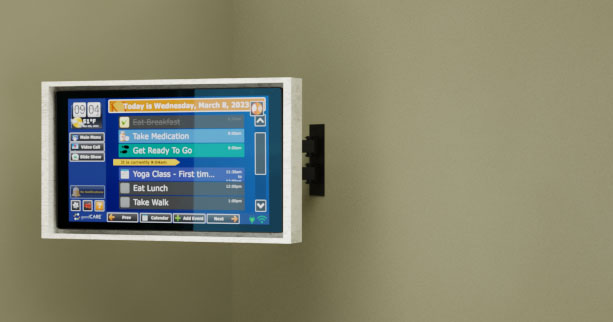I just read an extremely insightful blog entry called
It’s the Services Stupid! Transforming Old Age & New Technology Into Business Innovation
by one of my favorites in the industry, Joseph F Coughlin.
I have included a link to his blog entry below, but he basically starts out with “There is not a shortage of technology being developed for old age so why haven’t these gadgets flooded retail shelves or become a routine government procurement tantalizing contractors in the Fed’s Commerce Business Daily? President Bill Clinton’s advisor James Carville coined the phrase ‘it’s the economy stupid’ to capture what the 1992 American public was most concerned about – the economy. Today’s investors, technology researchers and the aging community need to see the promise of technology but understand what older people, families and payers really care about – complete service solutions that lead to improved outcomes in living.”
… this kind of thing has been on my mind these days…what are the stumbling blocks and what can we do to overcome them? Here is my list of just some initial hurdles that we need to get through in order to get to the point where Digital Home Health Technology & Services can easily be deployed in a retail situation or in a medical situation:
1. REIMBURSEMENT!!! Insurance providers and Medicare providers need to recognize telehealth & remote monitoring as worthwhile and cost-effective investments…they will save money. How many studies do we need to prove this is the case? In the same way that computers saved banks money (eventually, after the learning curves)….this will be a huge cost savings (not to mention, we simply don’t have the physical caregivers nor the brick and mortar to support the massive disruptive demographics)
2. Hardware costs need to come down! Just like the early laptops and cell phones, the cost of the touchcomputers and bluetooth enabled telehealth devices are significant….mass adoption will drive these costs down and make the solutions more affordable to the software developers and end-users.
3. Acceptance of the public! This will come with time…GrandCare has been in this market since Jan 2005 and the acceptance has already grown by leaps and bounds (maybe not as fast as we expected), but it’s coming around. People are starting to understand WHAT this is and HOW it can apply to their own lives.
4. Acceptance in the Long Term Care & In-Home Care industry. Again…we are getting there…moving there. It is changing from being viewed as competition to being viewed as a caregiving tool…but how do they best utilize and who should play that role? Plays into #5.
5. There is a new role that will be created for the person that can help implement the right technology into the right situation. Just like in the 90’s when a brand new job role emerged (IT)…there is a need for someone that has enough technical know-how, with a healthcare/caregiving background. This person would be responsible for helping a person transition from hospital to home or even to develop a care plan that married hands-on care along with technology… I wrote about this new role in my white paper “Healing in Place”: Mitigating Hospital Readmissions Using Technology –
6. Business Models!! We need to create sufficient business models for in-home care providers, hospitals & Long Term Care Facilities. How do they charge? How should they monitor? How should they deploy? We need to define the exact process…in fact, I am working on defining this process at the moment for in-home care providers. What new roles they may need to hire, what an example charge could be and how they might utilize the socialization piece, perhaps add some in-home hands-on care and supplement with 24-7 monitoring.
Thanks again for your thoughtful post Dr. Coughlin!
-Laura Mitchell
GrandCare Systems
www.grandcare.com
reposted on http://www.grandcare.wordpress.com
Read the full blog entry
here00







